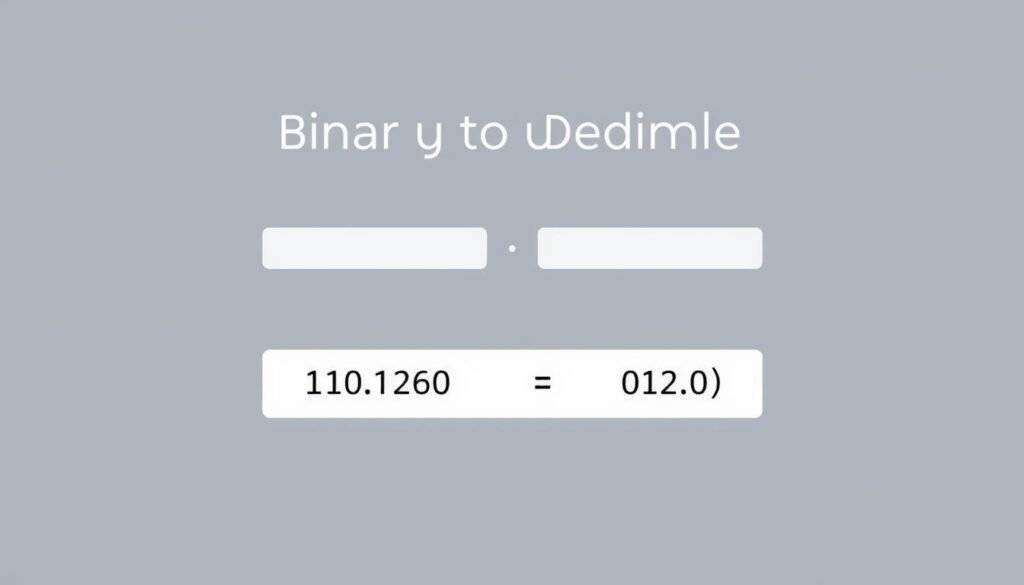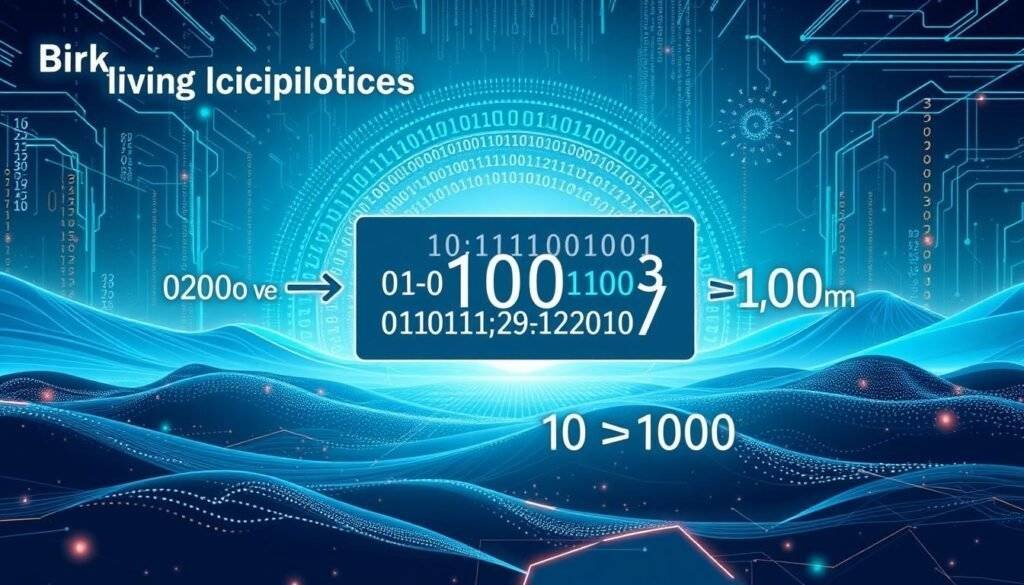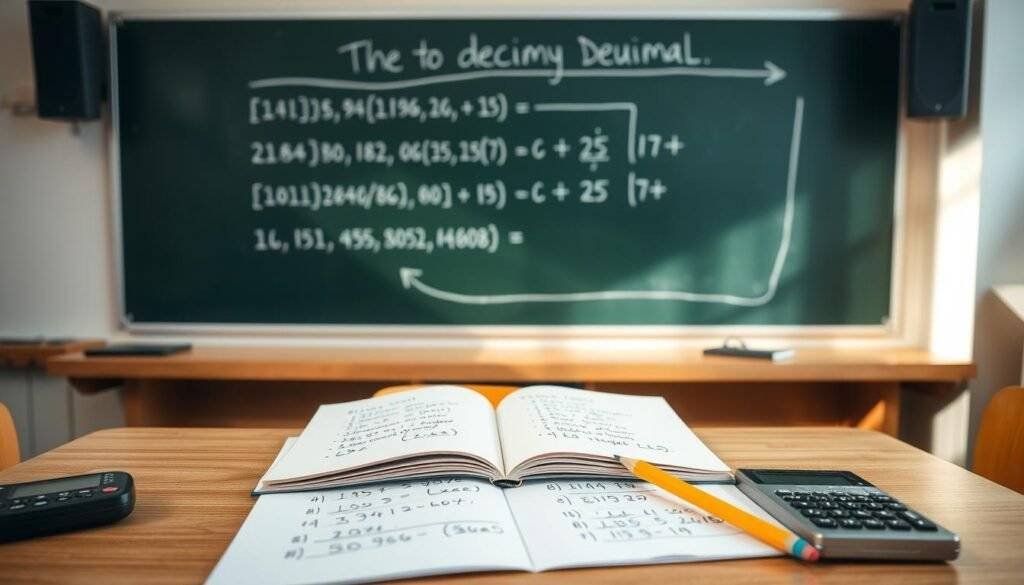Binary to Decimal Converter
Binary To Decimal Converter. Understanding the conversion of binary numbers to decimal format is crucial in computing and technology.
We rely on binary code to process information, but decimal representation makes it more comprehensible to us.
The binary number system and decimal number system are two fundamental number systems used in computing.
We’ll explore the differences between these systems, and provide step-by-step guides on how to convert binary to decimal using various methods.
By the end of this guide, you’ll be able to confidently convert any binary number to its decimal equivalent.
Key Takeaways
- Understand the importance of binary to decimal conversion in computing.
- Learn the differences between binary and decimal number systems.
- Discover step-by-step methods to convert binary numbers to decimal.
- Gain practical tips for quick and accurate conversions.
- Apply conversion techniques to any binary number, regardless of complexity.
- Enhance your understanding of number system conversions.
Understanding Number Systems
To comprehend the process of converting binary to decimal, we must first understand the fundamentals of number systems. Number systems are the foundation upon which all numerical representations are built, and they play a crucial role in computing and digital information storage.
What is the Binary Number System?
The binary number system is a base-2 system that uses only two digits: 0 and 1. This system is the backbone of computer programming and electronic devices. The binary system has been in use since ancient times, with evidence of its use found in ancient Indian, Chinese, and Egyptian cultures. In modern computing, binary digits, or bits, are the fundamental units of information and are used to represent all types of data.
What is the Decimal Number System?
The decimal number system, on the other hand, is a base-10 system that uses ten digits: 0 through 9. This is the most commonly used number system in everyday life, and it’s the system most people are familiar with. The decimal system is used for representing quantities and is fundamental to our understanding of mathematics and numerical values.
The Importance of Binary to Decimal Conversion
The ability to convert binary to decimal is a fundamental skill in computer science and technology. This conversion process is crucial for understanding how digital systems operate.
Applications in Computer Science
In computer science, binary to decimal conversion is regularly used by programmers when working with memory addresses, data storage, and low-level programming. It’s also essential for understanding computer architecture and how processors handle data. For instance, IP addresses and subnet masks often require conversion between binary and decimal, highlighting its importance in networking.
- Programmers use binary to decimal conversion when working with low-level programming and memory addresses.
- Understanding computer architecture and data handling relies heavily on this conversion process.
- Networking applications, such as IP addresses, require conversion between binary and decimal.
Everyday Uses of Binary to Decimal Conversion
Binary to decimal conversion has practical applications in everyday life, often encountered without being realized. Examples include digital electronics, computer hardware specifications, and data transmission rates. Understanding these conversions helps in troubleshooting technical issues and grasping system specifications. While modern tools can perform conversions automatically, knowing the process provides deeper insight into how digital devices function.
- Digital electronics and computer hardware specifications rely on binary to decimal conversion.
- Data transmission rates are often understood through this conversion process.
- Troubleshooting technical issues is easier with a grasp of binary to decimal conversion.
Binary to Decimal Converter: How It Works

The binary to decimal converter is an essential tool that relies on a straightforward mathematical process. To convert a binary number to decimal, we perform a multiplication operation on each digit of the binary number from right to left with powers of 2 starting from 0 and add each result to get the decimal number.
Basic Principles of Conversion
The conversion process is based on the concept of positional notation, where each position in a binary number corresponds to a specific power of 2. Understanding this principle is key to grasping how binary to decimal conversion works. The binary number system is base 2, meaning that each digit’s place represents a power of 2.
Binary to Decimal Formula
The formula to convert binary to decimal is straightforward: we multiply each binary digit by 2 raised to the power of its position, counting from right to left and starting at 0. For example, the binary number 1010 is calculated as (1*2^3) + (0*2^2) + (1*2^1) + (0*2^0) = 8 + 0 + 2 + 0 = 10 in decimal. This binary decimal formula is the foundation of how binary to decimal calculators work.
Method 1: Positional Notation Method
Understanding the positional notation method is key to mastering binary to decimal conversion. This method is based on the principle that each digit in a binary number has a place value that is a power of 2, depending on its position.
Step-by-Step Conversion Process
To convert a binary number to decimal using the positional notation method, we follow these steps:
- Write down the binary number.
- Count the powers of 2 from right to left, starting from 0.
- Multiply each binary digit by its corresponding power of 2.
- Add all the products to obtain the decimal equivalent.
Step 1: Write down the binary number and count the powers of 2 from right to left (starting from 0). Step 2: Write each binary digit (right to left) with corresponding powers of 2 from right to left, such that the MSB or the first binary digit will be multiplied by the greatest power of 2. Step 3: Add all the products in step 2. Step 4: The answer is our decimal number.
Worked Examples
Let’s apply the positional notation method to convert the binary number 1010 to decimal. Starting from the right, the calculation is as follows: (0 * 2^0) + (1 * 2^1) + (0 * 2^2) + (1 * 2^3) = 0 + 2 + 0 + 8 = 10. Thus, the decimal equivalent of 1010 is 10.
For a more complex number like 11001, the process is: (1 * 2^0) + (0 * 2^1) + (0 * 2^2) + (1 * 2^3) + (1 * 2^4) = 1 + 0 + 0 + 8 + 16 = 25. So, 11001 in binary is 25 in decimal.
Method 2: Doubling Method
To provide a comprehensive understanding, we will explore the Doubling Method, which converts binary numbers to decimal by iteratively doubling the running total. This method processes binary digits from left to right, offering an intuitive alternative to the positional notation method.

Step-by-Step Conversion Process
The Doubling Method involves a simple, iterative process. Starting with 0, we double the current total and add the next binary digit from left to right. This progressive calculation builds the decimal equivalent of the binary number step by step.
To illustrate, let’s consider the binary number 1101. We start with 0. The process involves:
- Doubling 0 and adding 1 (the first digit), resulting in 1.
- Doubling 1 and adding 1 (the second digit), resulting in 3.
- Doubling 3 and adding 0 (the third digit), resulting in 6.
- Doubling 6 and adding 1 (the fourth digit), resulting in 13.
Worked Examples
Let’s apply the Doubling Method to a few binary numbers to demonstrate its effectiveness. For instance, converting the binary number 1010:
- Start with 0, double it, and add 1 (first digit), getting 1.
- Double 1 and add 0 (second digit), getting 2.
- Double 2 and add 1 (third digit), getting 5.
- Double 5 and add 0 (fourth digit), getting 10.
This method is particularly useful for mental calculations with shorter binary numbers. It also serves as a valuable educational tool to understand the relationship between binary and decimal numbers.
Binary to Decimal Conversion Table
To facilitate quick conversions, we’ve compiled a comprehensive binary to decimal conversion table. This table serves as a quick reference for common binary values and their decimal equivalents, saving time when working with frequently used binary numbers.
Common Binary Values and Their Decimal Equivalents
The conversion table includes binary numbers from 0 to 31 (00000 to 11111) and their decimal equivalents. It also includes powers of 2 (32, 64, 128, 256, etc.), which are particularly useful in computing contexts. By familiarizing yourself with these common conversions, you can quickly look up decimal values for binary numbers.
How to Use the Conversion Table
To use the conversion table effectively, simply look up the binary number you’re working with. For larger binary numbers, you can break them down into smaller components found in the table. This technique allows you to use the table as building blocks for converting more complex binary numbers. For example, in practical scenarios like network addressing or memory allocation, you can efficiently convert binary numbers to decimal using this method.
Practice Examples with Solutions
To solidify your understanding of binary to decimal conversion, we’ll dive into a series of practice examples with step-by-step solutions. These examples will cover both simple and complex binary numbers, helping you apply the conversion methods learned in previous sections.
Converting Simple Binary Numbers
Let’s start with simple binary numbers (4 digits or fewer). For example, to convert (1010)2 to decimal:
- 1 ⨯ 23 = 8
- 0 ⨯ 22 = 0
- 1 ⨯ 21 = 2
- 0 ⨯ 20 = 0
Adding these together gives us 8 + 0 + 2 + 0 = 10. So, (1010)2 = 10 in decimal.
| Binary Number | Decimal Equivalent |
|---|---|
| (1001)2 | 9 |
| (1100)2 | 12 |
| (1111)2 | 15 |
Converting Complex Binary Numbers
For more complex binary numbers (8 or more digits), the process is the same, but with more steps. Let’s convert (11010101)2 to decimal:

1 ⨯ 27 + 1 ⨯ 26 + 0 ⨯ 25 + 1 ⨯ 24 + 0 ⨯ 23 + 1 ⨯ 22 + 0 ⨯ 21 + 1 ⨯ 20 = 128 + 64 + 0 + 16 + 0 + 4 + 0 + 1 = 213
Thus, (11010101)2 equals 213 in decimal.
Tips for Quick and Accurate Conversion
Quick and accurate binary to decimal conversion is within reach with the right mental math strategies. Mastering these techniques can significantly speed up the conversion process.
Mental Math Shortcuts
One effective method is to recognize powers of 2 in binary. For instance, the binary number 1000 represents 8 in decimal because it’s 2^3. Similarly, 10000 represents 16 (2^4). We can use these known values to quickly derive unknown values. For example, the binary number 11000 can be broken down into 10000 (16) and 1000 (8), totaling 24 in decimal.
Common Patterns to Recognize
Certain binary patterns are common and useful to recognize. For example, a binary number consisting of all 1s can be quickly converted using the formula 2^n – 1, where n is the number of digits. So, 111 (3 digits) equals 2^3 – 1 = 7, and 1111 (4 digits) equals 2^4 – 1 = 15. Recognizing these patterns can significantly speed up the conversion process.
| Binary Number | Decimal Equivalent |
|---|---|
| 1000 | 8 |
| 10000 | 16 |
| 111 | 7 |
| 1111 | 15 |
Conclusion
As we’ve explored throughout this guide, understanding the conversion between binary and decimal number systems is fundamental to working with digital systems. We’ve covered two primary conversion methods: positional notation and doubling, each with its own advantages.
By mastering binary to decimal conversion, individuals can enhance their understanding of computer science and digital electronics, enabling them to work more effectively with digital technologies. Regular practice with the techniques and resources provided will build proficiency.
FAQ
What is the purpose of converting a binary number to decimal?
We convert binary numbers to decimal to understand their value in a more familiar number system, making it easier to perform arithmetic operations and comprehend the data represented by the binary number.
How do I convert a binary number to decimal manually?
We can manually convert a binary number to decimal by using the positional notation method, where we multiply each binary digit by the corresponding power of 2 and sum the results.
What is the binary number system, and how does it differ from the decimal system?
The binary number system is a base-2 system that uses only two digits: 0 and 1. In contrast, the decimal system is a base-10 system that uses ten digits: 0 through 9. This fundamental difference affects how numbers are represented and calculated in each system.
Can I use a binary to decimal conversion formula for any binary number?
Yes, we can apply the binary to decimal conversion formula to any binary number. The formula involves multiplying each binary digit by 2 raised to the power of its position, counting from right to left and starting at 0.
Are there any shortcuts for converting common binary values to decimal?
Yes, we can recognize common binary patterns and their decimal equivalents to speed up the conversion process. For example, knowing that 2^10 = 1024 can help us quickly convert binary numbers like 10000000000 to decimal.
How can I verify the accuracy of my binary to decimal conversions?
We can verify the accuracy of our binary to decimal conversions by using online conversion tools or calculators and comparing the results with our manual calculations.
What are some practical applications of binary to decimal conversion in everyday life?
Binary to decimal conversion has various practical applications, including computer programming, networking, and data analysis, where understanding binary data in decimal form is essential for making informed decisions and performing calculations.

